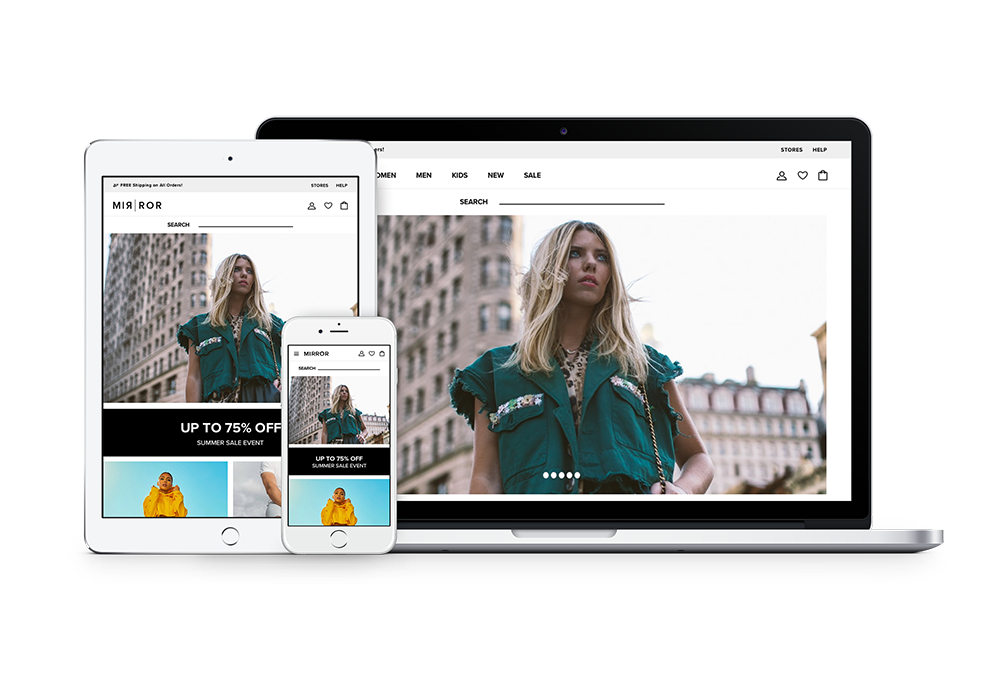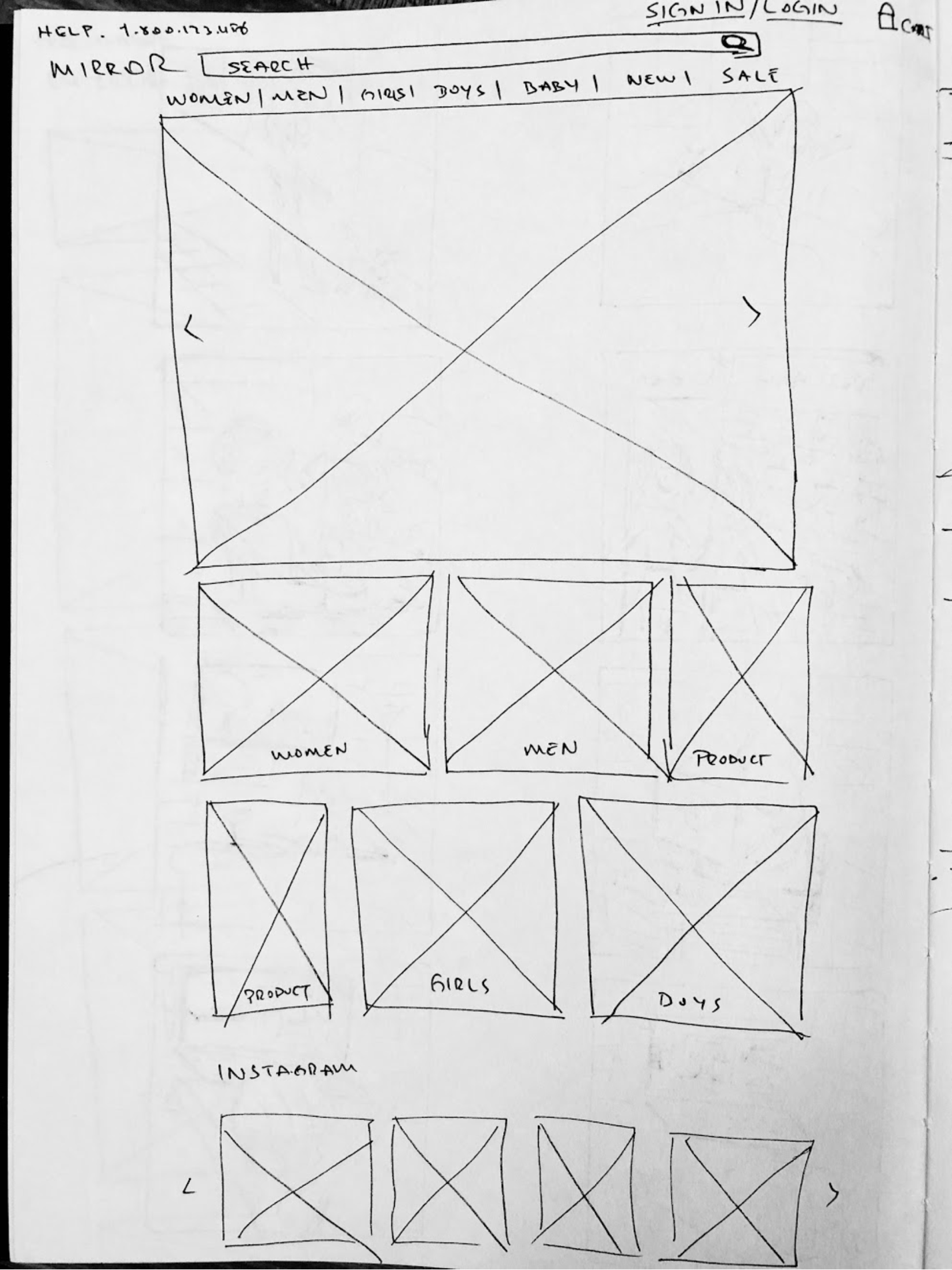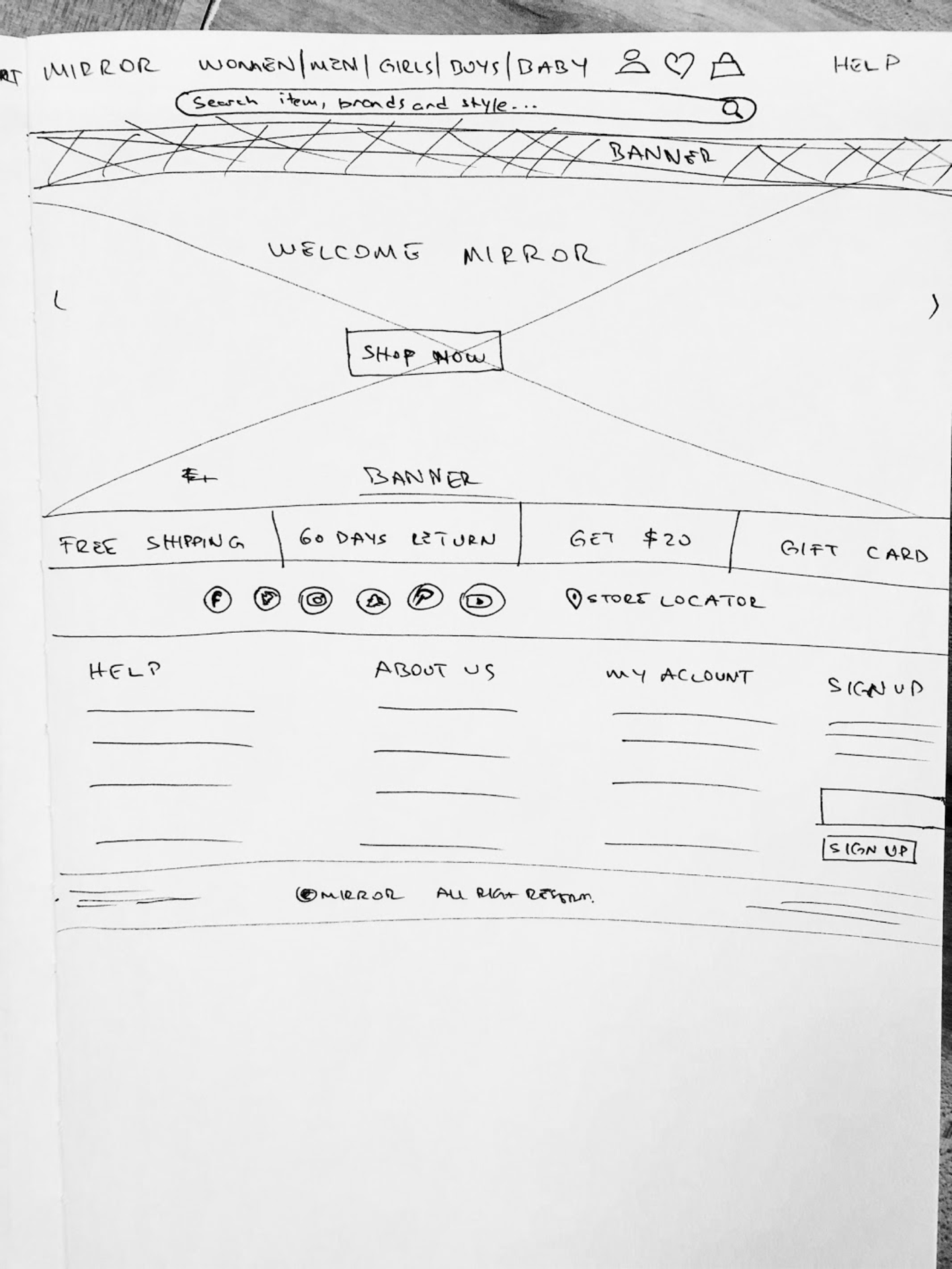What I have done:
Market Research, Interview, Competitive Analysis, Personas Creation, Ideation, UI Design, UX Design, Style Guide, Branding, Usability Testing, Prototyping.
Tools:
Pen & Paper, Sketch, Invision, Photoshop
Sector:
Fashion
What I have done:
Market Research, Interview, Competitive Analysis, Personas Creation, Ideation, UI Design, UX Design, Style Guide, Branding, Usability Testing, Prototyping.
Tools:
Pen & Paper, Sketch, Invision, Photoshop
Sector:
Fashion




After the high fidelity design process, we conducted usability testing and created affinity diagram.
Test Objectives
Test Subject
High Fidelity Prototype for Mirror Desktop Website
Methodology
Remote: I sent the link of Invision Prototype and ask comments and feedbacks.
In Person: I also used my laptop to share Invision Prototype with the participants.
Participants
Number of participants: 6-10
Age Demographics: 18 – 44
Personality: Have an interest in online shopping, and buying clothing online frequently.
Recruiting Plan
I recruited family friends, co-workers and friends of close friends to participate in this testing.
Please click here for Usability Report >>>
Feedback from the usability testing: